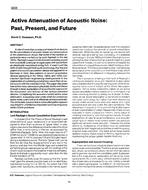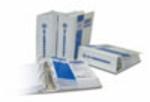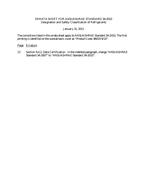Description
A view of more than a century of research on devices for the cancellation of acoustic waves and observations of the phenomenon shows that some of the earliest experiments were carried out by Lord Rayleigh in the late 1870s. Rayleigh’s experiments involved canceling sound from a carefully tuned pair of organ pipes with sound from an electrically maintained tuning fork. It wasn’t until the birth of radio brought forth audio technology that the first patent on a sound cancellation device was applied for in Germany in 1933. New patents on sound cancellation devices appearing in the 1950s, 1960s, and 1970s contributed significant engineering developments to the original idea of combining out-of-phase waves from an active source with the Unwanted noise. This paper discusses how active noise attenuation physically works and shows through a basic explanation of acoustics the reasons for the successes and failures of the various patented devices. Considering the acoustics behind active noise attenuation, it becomes clear under what circumstances active noise control will work effectively and economically. The immediate future of active noise attenuation appears very bright for a limited but important set of low-frequency noise control problems.
Citation: ASHRAE Transactions, vol. 95, pt. 2, Vancouver, BC 1989
Product Details
- Published:
- 1989
- Number of Pages:
- 14
- File Size:
- 1 file , 2 MB
- Product Code(s):
- D-27115




